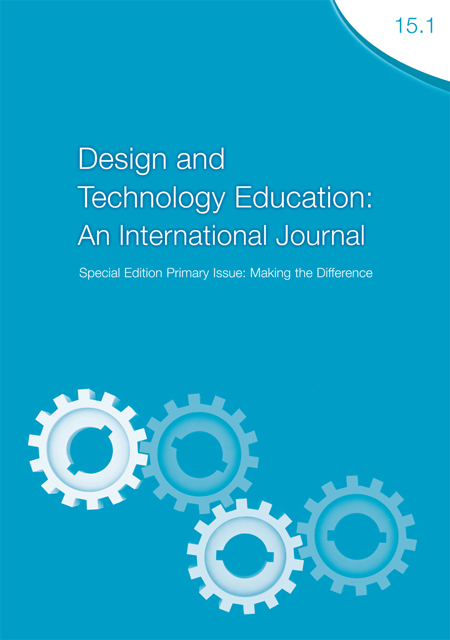Back to the Future: Where next in a world of cross-curricular primary education?
Keywords:
cross-curricular, primary education, partnership school, designing, project workAbstract
This article is an interim report on a research project concerning the place of Design and Technology in
selected primary schools at a time of curriculum change. There is a particular focus on the influence of the
processes surrounding acts of designing as they may impact on the wider curriculum. The process of design
may have wider applications in a future curriculum which will embrace features such as “creativity” on a more intensive scale than hitherto. It may also become diluted as subject focal points become less obvious.
This study is focused on student teachers and serving teachers in what are termed “Partnership” schools. Partnership is an arrangement by which Canterbury Christ Church University establishes secure training platforms with schools. Teacher education students may thus undertake their placements in appropriate and controlled surroundings in order to develop and practise their teaching skills and become rounded and successful teachers. Partnership schools receive a succession of primary education student teachers throughout the school year. Generally the placements become longer as the student teachers progress through their studies. It is the case that many of the schools within the “partnership” arrangement with the Faculty of Education at Canterbury Christ Church University are moving towards cross-curricular approaches to learning and teaching. For research purposes, they are an accessible stock of schools within which trends in the shifting curriculum can be identified and have been treated as an opportunity sample for research purposes.
Downloads
Published
How to Cite
Issue
Section
License

This work is licensed under a Creative Commons Attribution 4.0 International License.
This work is licensed under a Creative Commons Attribution 4.0 International License.
Authors who publish with this journal agree to the following terms:
Authors retain copyright and grant the journal right of first publication with the work simultaneously licensed under a Creative Commons Attribution License that allows others to share the work with an acknowledgement of the work's authorship and initial publication in this journal.
Authors are able to enter into separate, additional contractual arrangements for the non-exclusive distribution of the journal's published version of the work (e.g., post it to an institutional repository or publish it in a book), with an acknowledgement of its initial publication in this journal.


